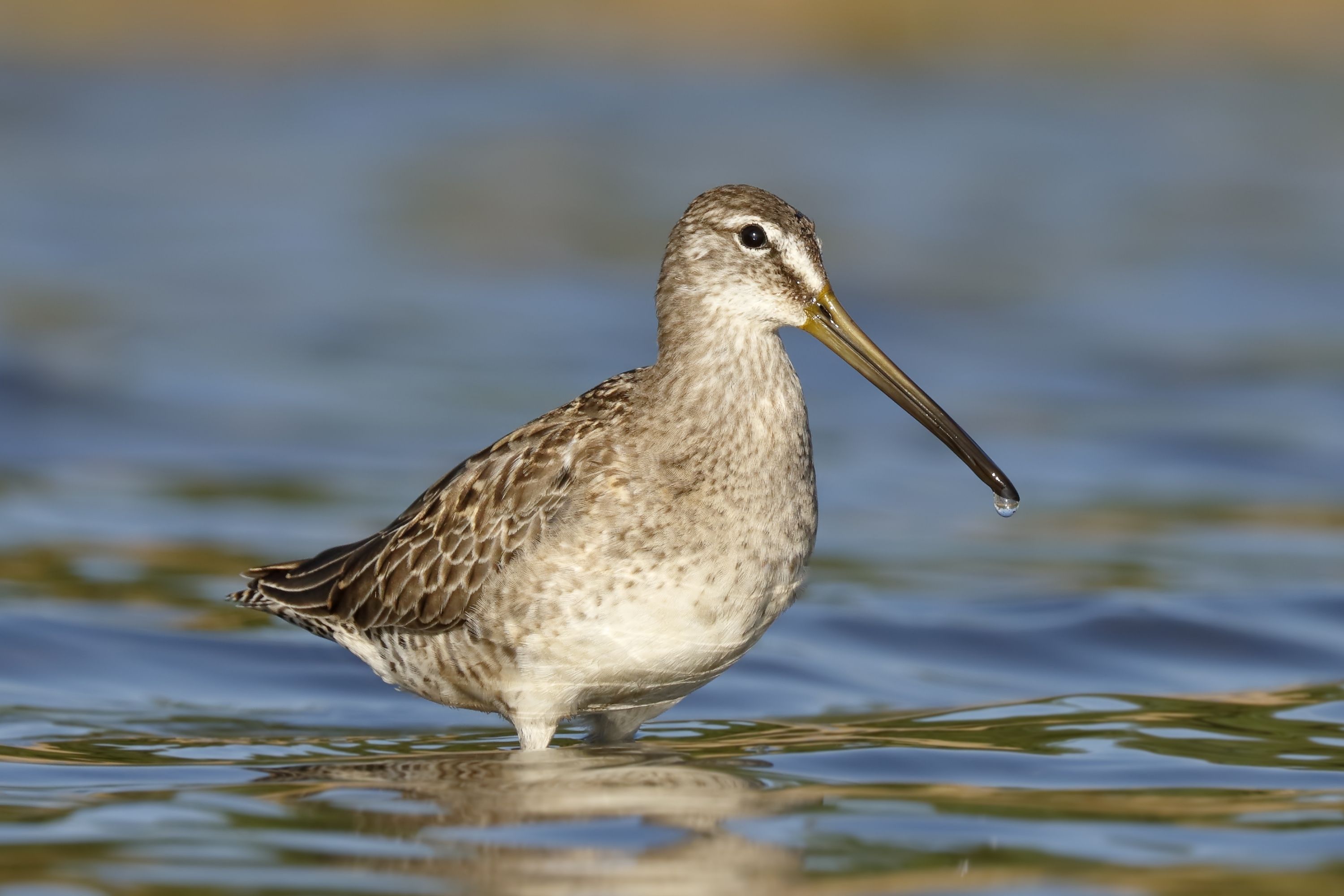Long-billed dowitcher
(Limnodromus scolopaceus)

Description
The long-billed dowitcher (Limnodromus scolopaceus) is a medium-sized shorebird with a relatively long bill belonging to the sandpiper family, Scolopacidae. In breeding plumage, adults are characterized by a beautiful rufous head and underparts with a darker mottled back and a large white upper rump only seen in flight. They feed in various freshwater habitats with their bill underwater in a "sewing machine" motion and are known to have an exciting mating display where males chase females in flight. The genus, Limnodromus is Ancient Greek from limne, "marsh" and dromos, "racer". The specific scolopaceus is New Latin for "snipe-like", from Latin scolopax, scolopacis, a snipe or woodcock. The English name is from Iroquois and was first recorded in 1841. The Long-billed dowitcher is nearly identical in appearance to the Short-billed dowticher and was only recognized as a separate species in 1950 by Pitelka. Between the two, the best distinguishing field mark is their flight call, especially in winter where both species are even more difficult to tell apart. However, the two species differ ecologically in a few ways, starting with habitat and breeding location. Short-billeds prefer salt-water and breed primarily in southern Alaska and Yukon, as well as central Canada and the Maritime provinces, while Long-billeds generally prefer freshwater and breed mainly from western and northern Alaska to eastern Siberia before migrating as far south as Mexico for the winter. The Long-billed dowitcher is a medium-sized, stocky sandpiper with a bill about twice the length of its head. In all plumages, the long-billed dowitcher has a whitish supercilium and dark loral stripe that continuous past the eye. The tail is barred black and white with the black being almost twice the width of the white and a large distinctive white rump which extends up to the middle of its back. Long-billed dowitcher are in breeding plumage from approximately May to late August or early September. In breeding plumage, adults are characterized by a dark crown on top of their head and a rufous neck, chest, and belly underneath with black bars on their breast and white barring on flanks when plumage is fresh. The older the feathers get the less the black bars may appear leaving the breast dark redish. The crown and the back are a mix of brown, black and buff markings. Wings and upper-back are mottled with black, buff, and white markings looking overall dark brown.
Taxonomic tree:







